
CBD is a versatile cannabinoid that is often used as a natural way to support your health. But choosing and buying CBD products can be confusing; there are lots of different types, various strengths and numerous brands all claiming to provide the best and purest products.
At for the Ageless, we’ve found that a lot of the information available online can be conflicting and vague. That’s why we’ve created a comprehensive, straightforward guide that will answer all your questions and help you buy CBD with confidence.
We’ve consulted experts and carried out extensive research into UK law to ensure that we’ve got the latest, most accurate information. From this, we’ve put together guidelines on how to choose high-quality products, outlined the potential side effects and designed many other useful sections to help you better understand the options available to you.
In this CBD Guide:
1. What is CBD?
2. Facts about CBD
3. How does CBD work?
4. Benefits of CBD
5. Are there side effects?
6. Choosing your product
7. How to take CBD
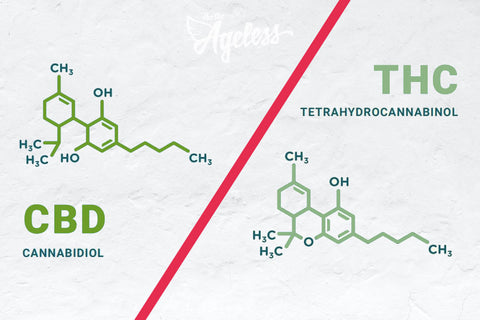
Cannabidiol (CBD) is one of the best known of over one hundred cannabinoids found in the cannabis plant. Unlike the notorious THC (tetrahydrocannabinol), CBD is non-intoxicating and is used in numerous food supplements and skincare products.
It’s a relatively recent addition to the UK market and can now be found in high street shops and online stores throughout the UK and worldwide.
After reviewing the latest research, the World Health Organization announced that they consider it as safe for use as a food supplement. They also stated that it’s “generally well tolerated and with a good safety profile”.
Yes, most CBD products are legal to purchase in the UK. However, there are various regulations that govern what it can contain, how it is produced and how it can be marketed.
For CBD to be sold in the UK it must not be promoted as a medicine or having medicinal benefits.

THC is a controlled substance as per the Misuse of Drugs Regulations 2001 (MDR 2001). For a CBD product to be sold containing THC (full-spectrum), there must be no more than 1mg of any controlled substance in the final preparation. Some brands and websites claim that the limit is 0.2% THC; this is a common error which only refers to the amount permitted in legally grown hemp plants.
Whilst most CBD products are available for sale legally, hemp flower is not legal in the UK because it is currently covered by the same law as cannabis flower in the MDR 2001.
CBD does not make you feel high because it is non-intoxicating. THC is the component of cannabis that is intoxicating and this can only be found in low levels in full-spectrum CBD products as per UK law.
CBD is psychoactive because it interacts with your brain and nervous system. Any substance that works with your body like this must be described as ‘psychoactive’, even if, like CBD, it doesn’t intoxicate.

Of the many studies that have been conducted with CBD, none have reported any signs that would indicate the potential for addiction. The World Health Organization summed up its findings on this matter by stating:
“In humans, CBD exhibits no effects indicative of any abuse or dependence potential”. There’s still a lot for us to learn about CBD and it’s not completely clear why CBD isn’t addictive, but some scientists believe that it’s because, unlike THC, it doesn’t bind directly with your body’s chemical receptors.
Because cannabidiol is a non-intoxicating cannabinoid CBD won't impair your ability to drive. However, most CBD oils contain traces of other cannabinoids including CBN and THC.
So, it’s important to remember that every time you drive, it’s your responsibility to make the personal assessment that you are fit to do so safely.
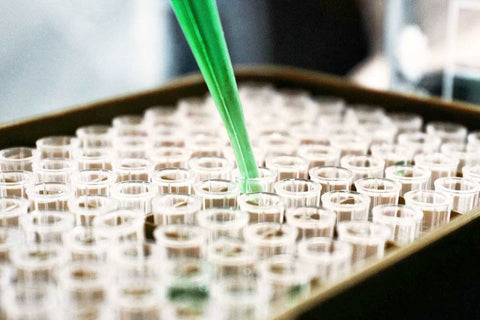
CBD is legal in the UK and with a few simple steps can be used without fear of a positive drug screening result.
Modern drug tests only screen for THC. If the level of THC reaches a defined threshold you will fail the test. To prevent this, you must be certain that the CBD products you buy are low in THC or THC free.
Hemp is a term used for varieties in the cannabis plant family that contain less than 0.2% THC. Plants of this type are used for their seeds (pressed to create cooking oil rich in omegas), stalks (to produce fibres) and flowers/leaves (to produce CBD-rich food supplements).
CBD oil contains an extract made from the full cannabis plant (including leaves, flowers, stalks and seeds), whereas hemp oil is pressed from industrial hemp seeds only. The key differences are:

There is still more to learn about how CBD works in the human body, but most scientists suggest that it produces beneficial effects by interacting with your endocannabinoid system (ECS). The ECS is a collection of chemical receptors, endocannabinoids (human cannabinoids), and enzymes that work together to keep your body systems in a state of balance. For example, if you get too hot, cold, ill, stressed etc., it goes to work to put things right.
The receptors are present throughout your body but are more concentrated in your central and peripheral nervous systems. Endocannabinoid molecules are produced by your body and support your body to achieve a healthy balanced state in a range of different ways. The two that have been discovered so far are anandamide and 2-AG (2-arachidonoylglycerol).
Some cannabinoids, like THC, bind directly with the endocannabinoid receptors, but CBD doesn’t. Instead, it binds with enzymes found nearby. These enzymes usually break down the endocannabinoid anandamide, but CBD prevents this from happening. As a result, the levels of anandamide in your body are able to build up. With higher levels of anandamide available, your body is able to quickly respond to problems and restore a healthy balance.
CBD promotes health and well-being through its interactions with the endocannabinoid system. If an area or process in your body is out of balance, it supports the actions that restore the normal optimum conditions.

Because it is involved in so many systems throughout your body, the ECS is incredibly complex. Consequently, exactly how it works and what results it can produce is not yet entirely understood. However, what is known is that it’s involved in the regulation of many vital processes, including numerous brain functions, hormone production, hormone monitoring, and immune response.
By regulating these systems, it plays important roles in providing the right hormones for reproduction and stress response. It also influences how much energy is produced from food during digestion and the use of glucose in your muscles.

Some people experience side effects when taking CBD. The most common are: dry mouth, gastrointestinal problems, including discomfort, diarrhoea or vomiting, and changes in appetite and weight.
Current advice from the UK Foods Standards Agency states: “As a precaution, we recommend that healthy adults do not take more than 70mg a day”. The reason being some studies have reported side effects at amounts that far exceed the FSA’s guidelines. The following effects are linked to trials where higher daily servings of more than 300-600mg per day were consumed: low blood pressure, dizziness, and liver toxicity.
Other things to be aware of:
Allergies - CBD is not known to cause an allergic reaction, but different brands use different carrier oils, flavours, additives, and additional ingredients. Before you try a new product, make sure you know what it contains and that you’re comfortable with the brands quality and safety standards.
Interactions with medication - If you use any medication, you should consult your pharmacist or doctor before taking CBD, because it may interact with some commonly prescribed drugs. The UK Food Standards Agency’s recommendation is that you shouldn’t use CBD if you’re taking medication.

The medications most likely to produce adverse effects when taken with CBD are those that are metabolised by the cytochrome P450 family of enzymes. When you take CBD, it binds with these enzymes and prevents them from working. The result is that a higher, possibly unsafe, concentration of the medication reaches your blood. This is known as the ‘grapefruit effect’ because grapefruit juice also binds with these enzymes.
Many different types of medications are metabolised by P450 enzymes and are at risk of this interaction. This includes some anti-coagulants, anticonvulsants, antibiotics, antidepressants, antifungals, and beta-blockers.
Please note that we are not medical professionals; this list isn’t exhaustive and should not be used in lieu of medical advice.

As CBD becomes more popular, more products continue to reach the market. This means there are lots more types to choose from and a greater chance that you’ll find something to suit your needs. However, it’s also introduced lots of new industry terms and made it more complicated to find what you’re looking for.
To help you choose your CBD, let’s take a look at the key aspects of the product types you’re likely to consider:
CBD products come in a range of different strengths. Most often the strength is indicated on the label as an amount in milligrams or by a percentage. A milligram amount simply tells you how much CBD is present in the container, but a percentage can be more complicated. The percentage value doesn’t indicate the quantity of CBD on its own so you also need to take into account the product volume (10ml, 30ml, etc.).
This table shows how many milligrams (mg) of CBD a product contains based on the percentage (%) and the volume in millilitres (ml) of the container. The percentages shown are those most commonly used in CBD oils and similar products. What strength of CBD oil should you choose depends on how many mg you're going to consume per day and how long you'd like the bottle to last.
| 1% | 4% | 5% | 10% | 20% | 40% | 50% | |
|---|---|---|---|---|---|---|---|
|
10ml |
100mg |
400mg |
500mg |
1000mg |
2000mg |
4000mg |
5000mg |
|
30ml |
300mg |
1200mg |
1500mg |
3000mg |
6000mg |
12,000mg |
15,000mg |
|
100ml |
1000mg |
4000mg |
5000mg |
10,000mg |
20,000mg |
40,000mg |
50,000mg |
Most manufacturers will label CBD products as either full-spectrum, broad-spectrum or isolate. This refers to the type of hemp extract that was used to make it and will give you an indication of which cannabinoids it contains. Most CBD products contain at least a tiny trace of THC but those made with broad-spectrum and isolate should be as close to THC-free as possible.

Full-spectrum - contains CBD alongside all the naturally occurring cannabinoids found in hemp plants. CBD will be the most abundant, but there will be traces of others, including THC.
According to the ‘entourage effect’ theory, consuming a range of cannabinoids together is likely to enhance their effects. You can verify that a product is full-spectrum by looking at the certificates of analysis (lab tests). You won’t see a list of over 100 cannabinoids because not all are tested for but, you should expect to see CBD and about 6 or more other cannabinoids, including THC.
Broad-spectrum - contain a full range of cannabinoids but no THC. They’re likely to provide the entourage effect, but some scientists argue that THC is an essential component. When you buy a broad-spectrum product, you can expect to see 4 or 5 other cannabinoids listed alongside the CBD on the third-party lab results.
Isolate - a CBD-only extract that contains no other cannabinoids or plant matter. It is occasionally called ‘pure CBD’ and comes in the form of either crystals or a powder.
There are seven main types of CBD products that can be purchased in the UK. Each has its own pros and cons that should be considered before making a purchase.

CBD oil is a blend of CBD-rich hemp extract and a carrier oil. This is the most commonly available and popular type of CBD because it’s versatile, easy to use and with a wide range to suit every taste. It comes in a bottle with a dropper which most people use to place drops under their tongue.
Some less concentrated oils are thin enough to be used in a spray. This is a bottle with a spray top which can direct a jet of oil under your tongue without having to take the lid off. Some people prefer this because it’s easier to use and minimises the chance of a leak.

CBD paste is a thick putty-like substance that usually contains a blend of hemp extract, carrier oil and beeswax. It’s often preloaded into a syringe to make it easy to dispense a precise amount.
Most are made with whole-plant hemp extract, which means that they contain other naturally beneficial plant compounds including cannabinoids, terpenes, flavonoids and fatty acids.

Hemp tea is a dried blend of hemp flowers, buds, stems and leaves that can be steeped in hot water to create a refreshing brew.
It is an enjoyable and affordable way of taking cannabinoids and yields a different set of substances to those in most CBD oils. For instance, hemp tea doesn’t contain CBD but instead has higher levels of CBDa which is CBD’s precursor.
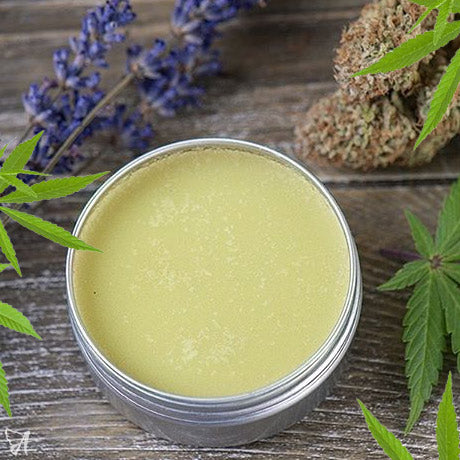
CBD is also added to creams, balms and body salves for direct application to your skin. Applying CBD topically like this allows you to target specific areas of your body.
Most balms, creams and salves include a blend of cannabinoids with essential oils and other beneficial ingredients to boost their effect.
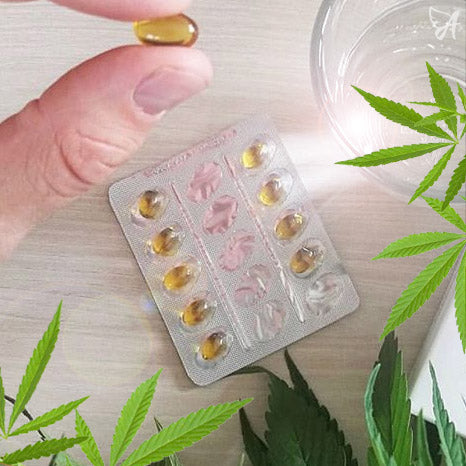
Capsules provide a convenient way to take a precisely measured amount of CBD. They don’t leak so they’re ideal for taking with you when you’re out and about.
CBD capsules also have minimal flavour, perfect if you don’t like the taste of CBD oil. The main drawback is that when swallowed, only between 4% and 20% of the active ingredient is likely to reach your bloodstream.

CBD e-liquids are designed to be vaporised and inhaled. Taking CBD this way means that a larger amount will reach your blood and the effects can start in as little as 10 minutes. Most e-liquids or vape oils contain hemp extract mixed with vegetable glycerine and propylene glycol, although some use fractionated MCT oil. This mix allows the CBD to be vaporised easily and inhaled smoothly; some manufacturers also add flavours. Because so much of the CBD in each inhalation can be used in your body, e-liquids are cost-effective; however, to use them, you’ll first need to buy a vaporiser.

CBD gummies and sweets are the naughtiest product on the list because the beneficial cannabinoids are often combined with a large helping of sugar. They are, however, an ideal way of taking CBD if you're tired of counting drops or want to take a break from the original flavour of the plant.
Although they may not be the healthiest way to take CBD, they are the tastiest, and they’re perfect for carrying with you in a bag or pocket.
Once you know the strength and type of CBD you’re looking for, it’s time to find the right product. Unfortunately, the quality of CBD products available in the UK can vary significantly. To ensure that you get good value and only ever buy high-quality CBD, there are 6 key criteria to consider:

Both the percentage and the total CBD content should always be clearly stated on the bottle. The percentage is important because it tells you the strength of the oil or paste. The total content helps you compare prices across a range of products as you can then work out the cost per mg.
With this information and the bottle size, you can work out precisely how much CBD you are taking in each drop.
For capsules, gummies and other edibles, the amount of CBD in each serving should be clearly stated as well as the total number of milligrams for the entire package.
Always check the percentage and the milligram amount on the label refers to total CBD content. Some products use language that is deliberately designed to mislead.
We consider CO2 Supercritical extraction the gold standard of cannabinoid extraction. This method preserves the cannabinoids, terpenes and other plant nutrients.
Other methods such as alcohol/butane extraction are not as stable and can leave chemical residues behind if not carried out correctly.

Each product should have a certificate of analysis. This will back up any claims made on the bottle and on the website. Firstly, and most importantly, it must confirm that the batch has the correct amount of CBD in the bottle.
You can also use these lab reports to ensure that the THC content is within the legally allowable range if it is full-spectrum. If you are buying broad-spectrum, it should confirm the absence of THC.
There are also other types of testing that are carried out by the best brands and these can include:
If a brand or retailer is not willing to show the source and what exactly is in their products via third-party lab tests, move on and shop elsewhere.

Cannabis Sativa L. is considered a bio-accumulator which means the hemp plant can absorb heavy metals from the ground. To avoid taking a harmful cocktail of chemicals, which could include fertilisers, pesticides and heavy metals, buy organic CBD.
If the product claims to be organic, it should be certified. Without certification the product is not organic. It is essential to find a trustworthy manufacturer that planted organic seeds then harvested, extracted and bottled the cannabidiol following a certified organic process.
This ensures your oil will be free of heavy metals and toxins. If the product is not certified organic, some brands will provide testing to show the absence of heavy metals.
We strongly believe that full-spectrum (all cannabinoids) and broad-spectrum (no THC but a range of other cannabinoids) products are better than isolates (CBD only).

Ideally, you want to consume a whole plant CBD oil that provides you with as many beneficial active ingredients as possible such as a wide range of cannabinoids, the plant's lipids, waxes, chlorophyll, flavonoids, terpenes, and other phytonutrients. The synergy they create working together is being widely studied and is known as the entourage effect.
Every strain, variety and crop contain a slightly different profile of these biomolecules so, you will find that the makeup of cannabinoids can vary from batch to batch. This can be checked on the certificates of analysis mentioned earlier.
When you have found a product that meets the above 5 criteria your final move should be to look for real user reviews. Every CBD oil, capsule, balm and e-liquid found on for the Ageless has been personally tested by us before being sent to our friends and family for feedback. Only then will we then it to the general public. But you shouldn’t just take our word for it. Go and read what others say.
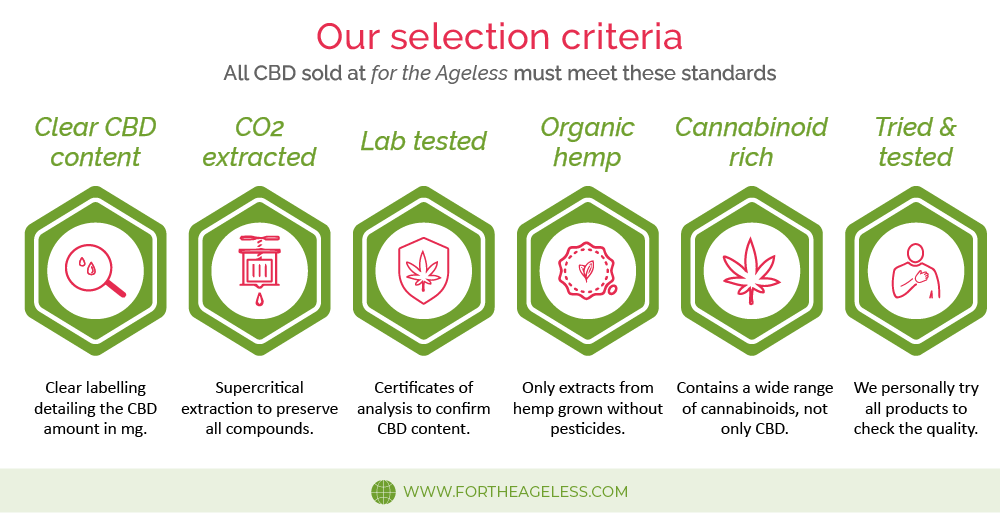
Whatever CBD product you choose, it’s likely to be simple to take. However, some products work best in certain amounts or can be used in different ways. Because it has a good safety profile, there is some room to try out a few different options to help you decide which method suits you best.
The latest guidance on CBD food supplements from the UK’s Food Standard’s Agency recommends that “healthy adults do not take more than 70mg a day”.
CBD affects everyone slightly differently depending on several factors, including body mass, internal chemistry and existing health conditions. Consequently, it’s important to take the time to find out how it affects you and what daily amount provides the results you’re looking for.

The best way to find this out is to begin by taking a small amount and slowly increasing it over a few weeks. For example, start by taking 10mg twice per day. After a week, you can double that amount to 20mg twice per day.
However, continuing to increase the daily amount may not yield the results you expect. This is because CBD is biphasic and can produce different effects with different serving sizes.
Listen to your body and increase the amount you take accordingly, without exceeding the 70mg daily amount. If in doubt, consult with a healthcare practitioner first.

At for the Ageless we recommend taking CBD alongside your meals (ideally breakfast and dinner) because all cannabinoids are fat-soluble. This is particularly useful if you are taking capsules or eating edibles, but even if you’re placing oil under your tongue it could improve the effectiveness of any excess that you swallow.
Depending on why you’re taking it and what results you’re looking for, you may want to adjust the timings. A good way to do this is to try a few different times to see which has the impact you’re hoping for.

There are lots of different products out there that can be taken in different ways. However, most of them will be taken in one of these five ways.
At for the Ageless, we recommend that you take oils and pastes by placing them under your tongue for at least 60 seconds. We find this method the most convenient way to get the largest amount of CBD into your bloodstream.
Placing CBD drops, spray or paste under your tongue and holding it there for 1 -3 minutes is an effective way to take it. The CBD then passes through the thin membrane in the bottom of your mouth into your blood vessels. This is a popular way to take it because it allows up to 35% of each measure to be absorbed into your bloodstream.
CBD is available in many different edible forms, food and drink, including capsules, gummies, sweets, tea and fizzy drinks. You can either buy ready-made CBD infused edibles or add oil or paste yourself. This is a convenient and sometimes tasty way to take CBD, but it’s less effective, with between 4% - 20% reaching your bloodstream.
Using a vaporiser to inhale CBD e-liquid is a fast-acting and cost-effective way to consume cannabidiol. Once you’ve got a vape, you need to select a high quality vape oil that make it an enjoyable experience. With this method, up to 56% of the CBD can reach your blood vessels.
Applying CBD in balms, ointments and salves or allowing it to be absorbed from a transdermal patch is an effective way to direct its effects at a specific area. If you use this method, it’s unlikely that any CBD will be broken down in your gut or liver. Although some will be lost, most of it will arrive at the target area. Products that are applied to your skin are easy to use and the cost per mg of CBD is often lower than other forms.
Products such as suppositories or CBD infused tampons can be inserted to provide local relief or as an alternative when ingestion via the mouth is not possible. This method is not as popular as the other and the products that are used in this way are harder to find.
Regardless of how you taken them, all CBD products need to be stored properly in order to keep them fresh for as long as possible.

How long it takes for CBD to work can be dramatically different depending on how you take it. When you choose to take CBD oil or paste orally, the effect can take between 30 minutes to 2 hours to take place but can last up to 8 hours. If you place it under your tongue, any that gets absorbed should take effect in 15 to 20 minutes.
The fastest results come from vaping, which can create an impact in as little as ten minutes. If you choose to apply CBD topically or insert rectally or vaginally, it’ll likely take between 20 and 35 minutes.
If you’re looking to absorb CBD more effectively or experience the effects sooner, there are a few things you can try. Research points to long-chain triglyceride fats such as MCT and other active ingredients like turmeric increasing the absorption of CBD when taken orally. This may result in slightly faster effects for any CBD products that are swallowed.

CBD does not make you feel high because, unlike THC, it is non-intoxicating. Depending on the person and the quantity of CBD consumed, some of our customers report no noticeable sensations while others experienced a feeling of relaxation and general grounding.
We wanted to know if this was typical, so we spoke to a range of popular UK CBD bloggers to find out how CBD makes them feel. Their responses ranged from “Typically, I'll feel very little obvious effects from CBD” to “It's like an all-over sense of peace and well-being”.
How it feels when you take CBD is also likely to depend on how you take it, what products you use and how concentrated they are. By starting with a small amount of CBD oil placed under your tongue you can slowly increase the amount. This will help you to get used to any sensations it produces.
For a comprehensive list of lifestyle habits that will improve the effectiveness of CBD check out our 5 physical and 5 mental keys for supplement success.
There are lots of choices to make when buying CBD, so hopefully this guide has given you the information you need to find something that works for you. If you’re still not sure where to start, we recommend beginning with a 5% CBD oil and placing the recommended number of drops under your tongue. This will give you a good introduction to CBD as a food supplement. Once you’ve found out how it works for you, you can get creative and use it in different ways or try a broader range of products.
Fact-checked by Dr Marios Kyriazis.
